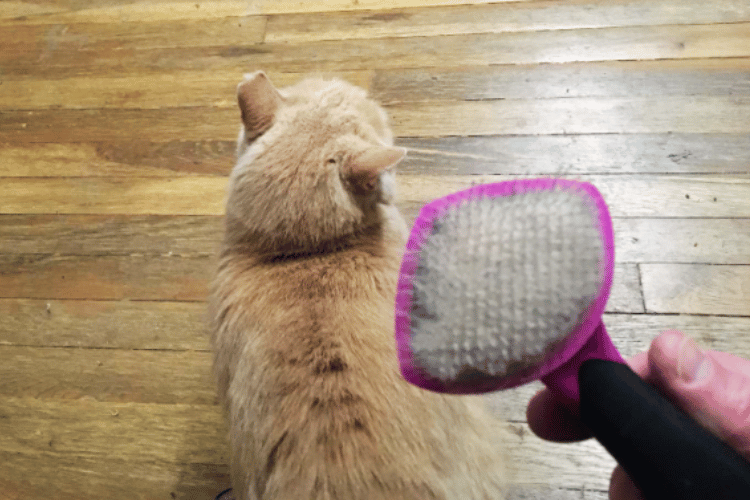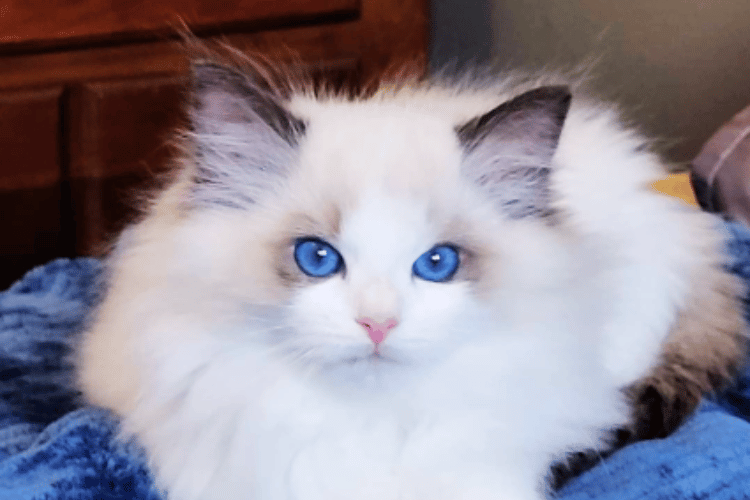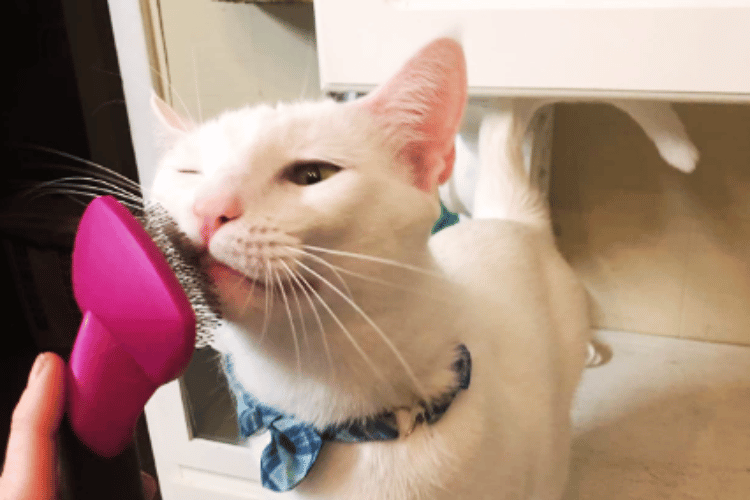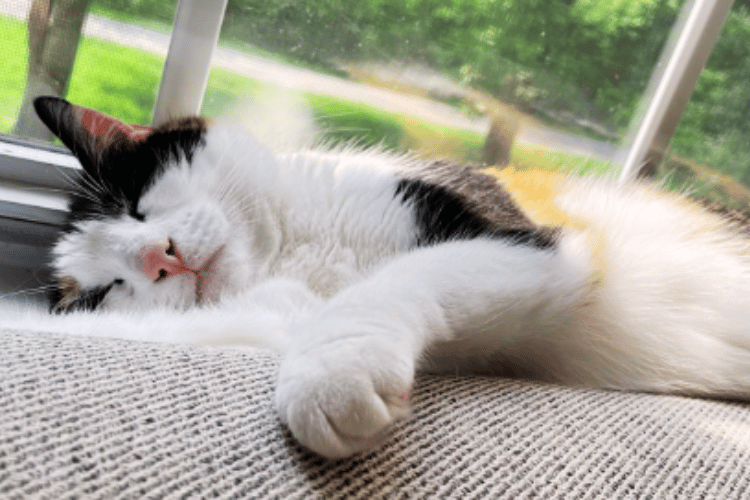Key Takeaways:
- Learn the correct technique to use a slicker brush on both long and short-haired cats.
- Understand the importance of choosing the right brush to maintain your cat's coat health.
- Discover how regular brushing sessions can benefit your cat's skin and fur.
Brushing your cat is an essential part of pet care that not only keeps your feline friend looking their best but also contributes to their overall health. Slicker brushes are a popular tool among cat owners, but knowing how to use them correctly is crucial to avoid discomfort and keep your cat's coat in top condition.
In this article, we'll guide you through the process of brushing your cat with a slicker brush, ensuring a pleasant grooming experience for both you and your pet.
Choosing the Right Brush
Before you start the grooming session, it's important to select the right brush for your cat's coat type. Slicker brushes are ideal for most cats, as they are designed to gently brush away dead and loose hair while distributing natural oils throughout the cat's fur.

For long haired cats, a slicker brush with long blades can help remove tangles and prevent matting. Short haired cats may benefit from a slicker brush with soft bristles that can remove dirt and excess hair without irritating the skin.
Preparing Your Cat for Grooming
Grooming sessions should be a stress-free experience for your cat. Start by creating a calm environment and gently petting your cat to help them relax. If your cat is new to brushing, you may want to introduce the slicker brush slowly, allowing them to sniff and investigate it before you begin.
Regular brushing from a young age can help your cat become accustomed to the process, making it easier for both you and your cat.
The Brushing Technique
When it comes to how do you brush a cat with a slicker brush, technique is key. Begin by gently brushing in the direction of the hair growth, starting from the head and moving towards the tail.
Use soft, smooth strokes to avoid scratching your cat's skin with the metal tines. For cats with long fur, you may need to use a little more pressure to remove knots and reduce tangles, but always be mindful of your cat's comfort.

Addressing Mats and Tangles
Matted fur can be painful for your cat, and it's important to address these areas with care. If you encounter mats, use the slicker brush to gently tease them apart. Avoid pulling or tugging, as this can cause discomfort. In severe cases, it may be necessary to visit a professional groomer or vet to safely remove the mats without harming your cat.
Understanding Your Cat's Coat Type
When it comes to grooming your feline friend, understanding your cat's coat type is crucial. Cats come with a variety of coat types, each with its own grooming needs. For instance, a short-haired cat typically requires less brushing and might do well with a soft bristle brush that's gentle on the skin.
On the other hand, a long-haired cat's luxurious locks often demand more attention to prevent mats and tangles. Using a pin brush or a dual-sided brush with soft teeth on one side and thin teeth on the other can be particularly effective for managing these longer coats.
Knowing the specifics of your cat's fur can help you choose the right tools. For example, a double-sided brush can offer versatility, with one side designed to detangle and the other to smooth the top coat. Cats with dense undercoats may benefit from a shedding comb or a zoom groom tool, which can help remove loose hair without pulling on the skin. Always remember that the goal is to maintain the health and appearance of your cat's coat while ensuring the grooming process is comfortable for them.
The Role of Self-Grooming in Cats
Cats are natural self-groomers, and this behavior plays a significant role in their overall health. Self-grooming helps cats to remove mats, distribute natural oils throughout their coat, and keep their skin clean.
However, even the most diligent self-grooming cat can benefit from a helping hand. This is where the right cat brush comes into play. A brush that mimics the action of a cat's tongue, like the zoom groom, can enhance your cat's self-grooming routine, especially for those hard-to-reach areas.

While self-grooming takes care of many aspects of coat maintenance, it's not always enough to prevent hairballs or manage shedding. Regular brushing sessions with a cat brush designed for your cat's specific coat type can significantly reduce the amount of cat hair around your home and minimize the formation of hairballs in your cat's stomach.
By complementing your cat's natural grooming habits with the appropriate brushing tools, you can help keep their coat shiny, healthy, and free of excess hair.
Brushing Different Coat Types
Cats come with a variety of coat types, and each may require a different approach. Long coated cats, for instance, may need daily brushing to prevent matting and keep their coat shiny.
Short haired cats, on the other hand, might only need brushing a few times a week. Regardless of hair types, the slicker brush can be used to effectively remove loose hairs and maintain a healthy, shiny coat.
The Benefits of Regular Brushing
Regular brushing with a slicker brush not only helps to remove dead hair and prevent matting, but it also stimulates the skin and helps spread natural oils for a glossy finish. Additionally, grooming sessions can serve as bonding time and allow you to check for any skin issues or parasites, such as fleas, which can be addressed with a flea comb.
After the Brushing Session
Once you've finished brushing your cat, take a moment to clean the slicker brush. Remove all the hair from the bristles and, if necessary, wash the brush with soapy water and let it dry. This ensures that the brush is clean and ready for the next grooming session, and it helps maintain hygiene for both you and your cat.
When to Seek Professional Help
If your cat's fur becomes too difficult to manage, or if they are particularly resistant to being brushed, it may be time to seek the help of a professional groomer. They have the experience and tools, like shedding combs and shedding blades, to handle even the most challenging grooming cases.

Conclusion
Brushing your cat with a slicker brush is a simple yet vital part of pet care. By following the right technique and using the appropriate brush for your cat's coat type, you can ensure a pleasant grooming experience that keeps your cat's fur looking its best. Remember to be gentle, patient, and consistent with your grooming routine for the best results.
FAQ Section
How often should I brush my cat with a slicker brush?
The frequency of brushing depends on your cat's coat type. Long haired cats may require daily brushing, while short haired cats might only need it a few times a week. Observe how quickly your cat's fur becomes tangled or dirty to determine the best schedule.
Can I use a slicker brush on a kitten?
Yes, you can use a slicker brush on a kitten, but ensure it has soft bristles and be extra gentle. Introducing grooming sessions early can help your kitten get used to the process as they grow.
What should I do if my cat hates being brushed?
If your cat dislikes being brushed, try to make the experience more enjoyable by brushing for short periods and offering treats as a reward. If your cat continues to resist, consult a professional groomer for advice and assistance.
Thank you for visiting LegitLists we hope this helps you make a legitimate choice!






